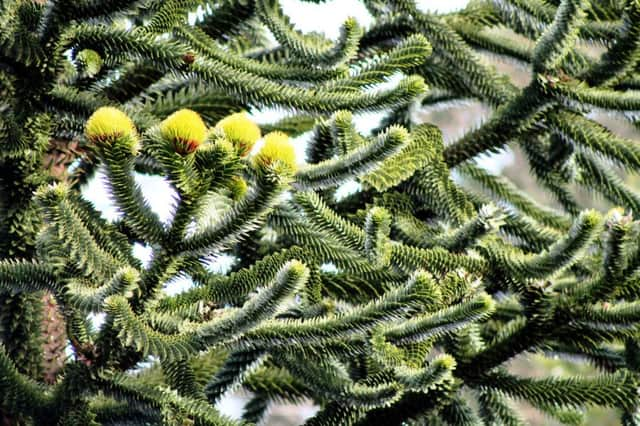Roadside puzzle


What seemed to be a splendid wheeze at the time proved to be a mistake; Chile pines, aka monkey puzzle trees (Araucaria araucana), have a tendency to grow up to 40 metres (or considerably more) in height. It is the national tree of Chile, where there is lots of room for it to grow.
In Britain, especially along dual carriageways in Leeds and the like, it was, to say the least, out of place.
Advertisement
Hide AdAdvertisement
Hide AdBut in its place, the monkey puzzle is a tree of distinction, a tree that, given room, becomes a specimen worthy of gracing any stately garden.
A well-established monkey puzzle tree produces horizontal, spreading branches that grow in whorls and are covered with leathery or needle-like leaves. Potentially, very painful, and probably the reason the tree earned its name.
It supposedly derives from its early appearance in Victorian Britain, when the species was still rare in gardens.
The story goes that Sir William Molesworth, owner of a young specimen at Pencarrow garden, near Bodmin, in Cornwall, was showing it to a group of friends. One of them remarked: “It would puzzle a monkey to climb that.”
Advertisement
Hide AdAdvertisement
Hide AdWhether or not the story is true matters now; Araucaria araucana will always be known as the monkey puzzle tree. If not that, then the Chile pine also fits it well.
Its planting alongside dual carriageways in Leeds might have come as a shock to drivers and pedestrians alike, but the tree itself tends to take all things in its stride. It was alive 200 million years ago when dinosaurs were in their prime. Its spine-like needles evolved to act as protection from grazing animals which are now long extinct.
Araucaria araucana can live for 1,000 years and in the wild can be found on the slopes of rocky volcanoes – its bark is fire-resistant, so it seems to fear nothing and no-one.
It thrives in well-drained, slightly acidic, volcanic soil but will tolerate almost any soil as long as it’s free-draining.
It is usually found above the 1000m line but, as the Victorians and latter-day road engineers discovered, it is just as happy nearer sea level.
This is one heck of a tree with one heck of a history.